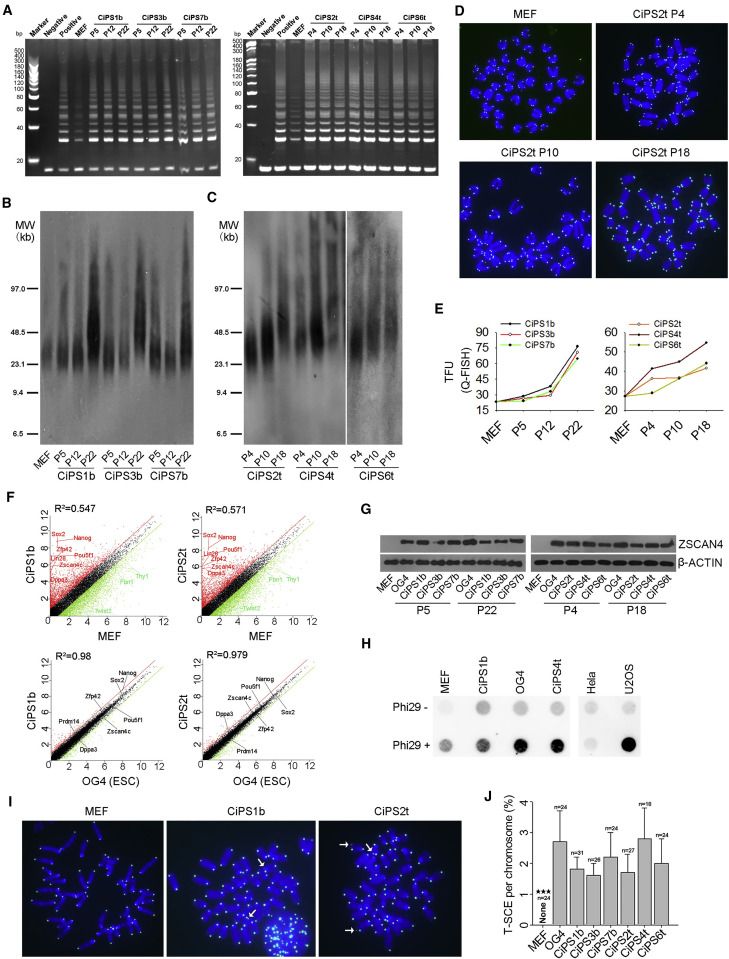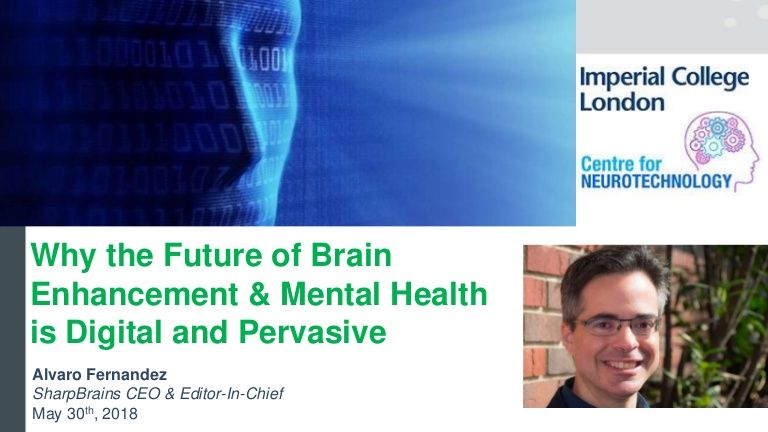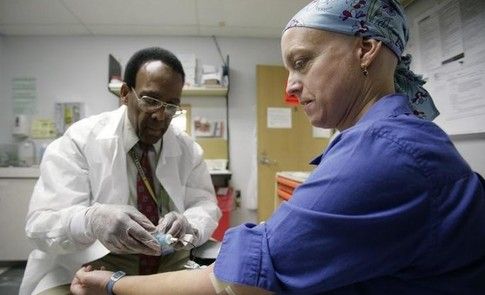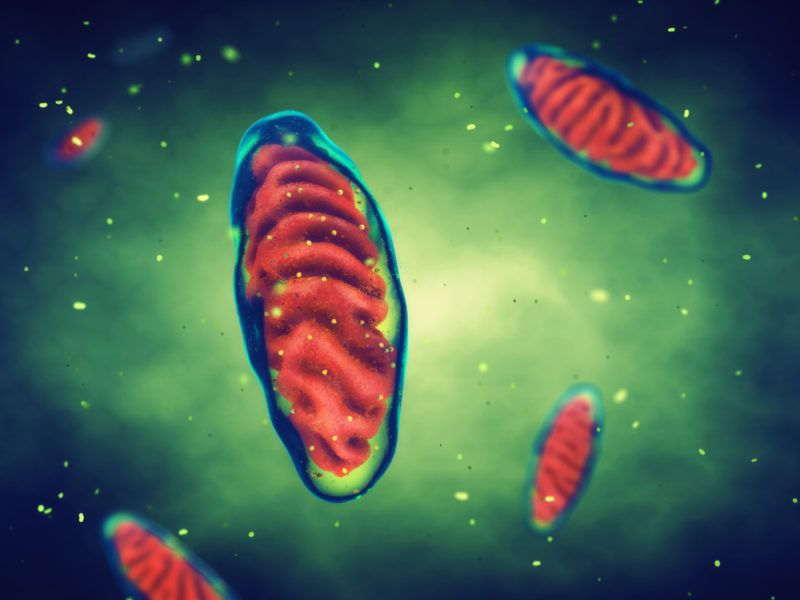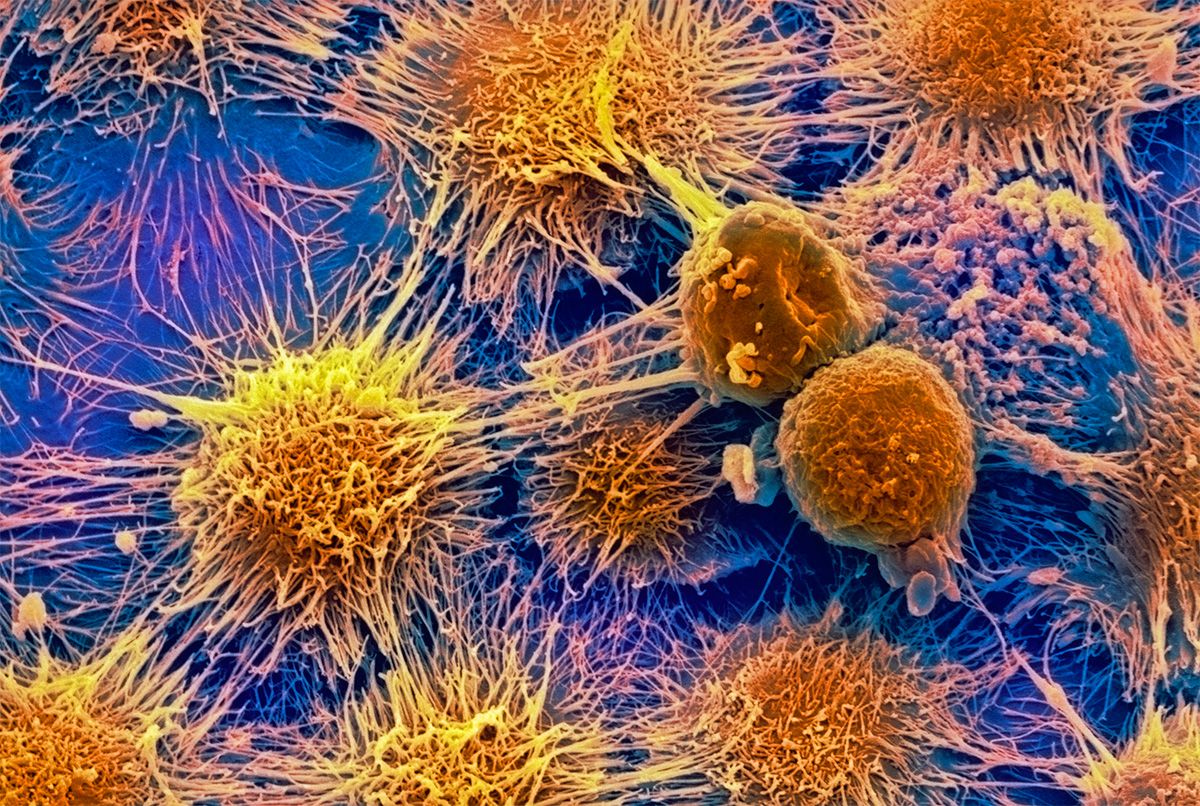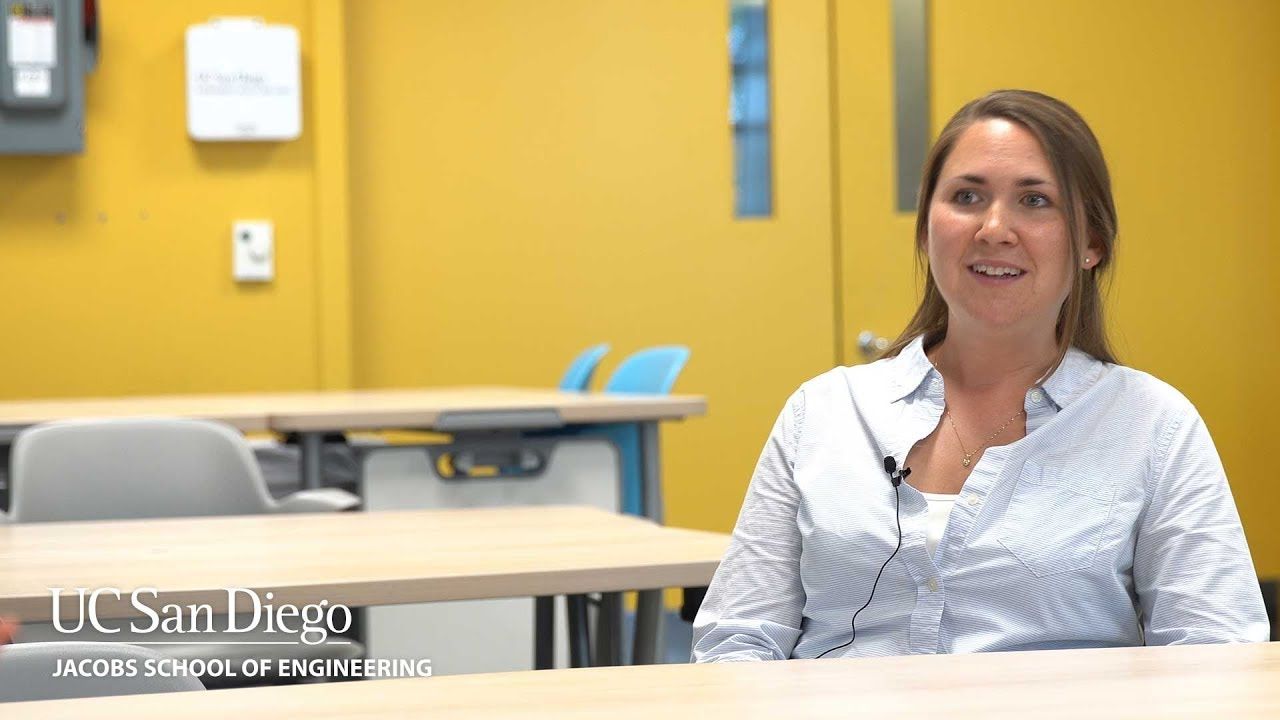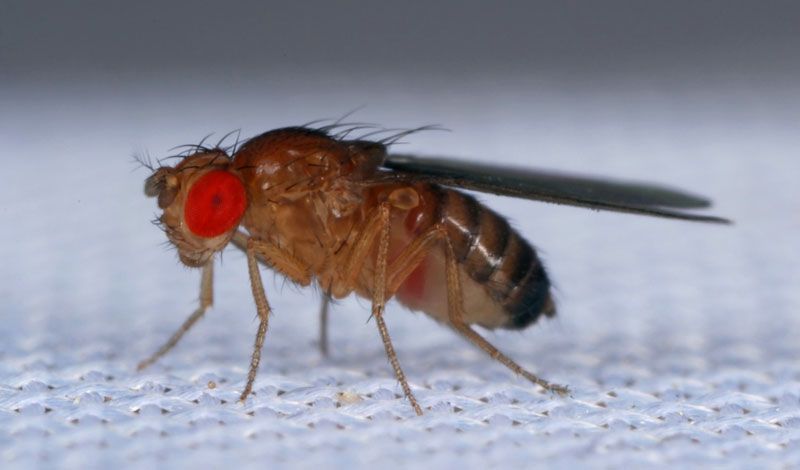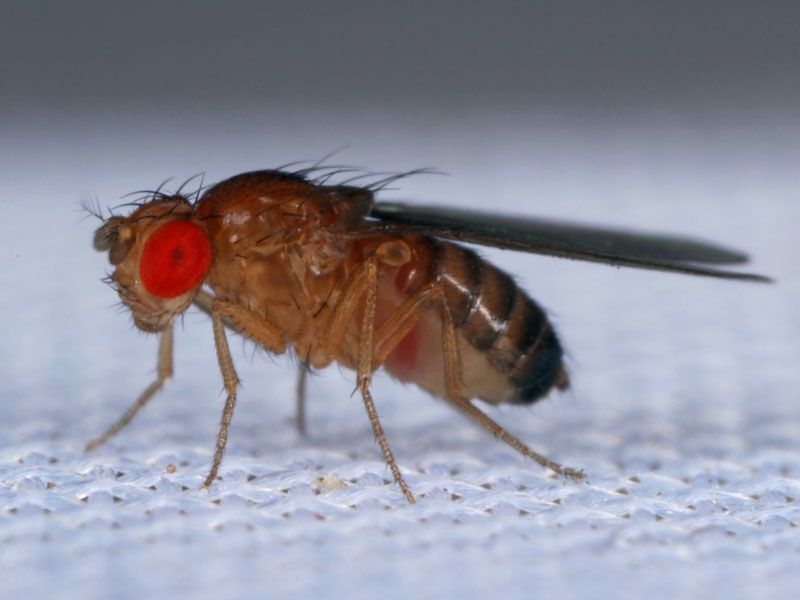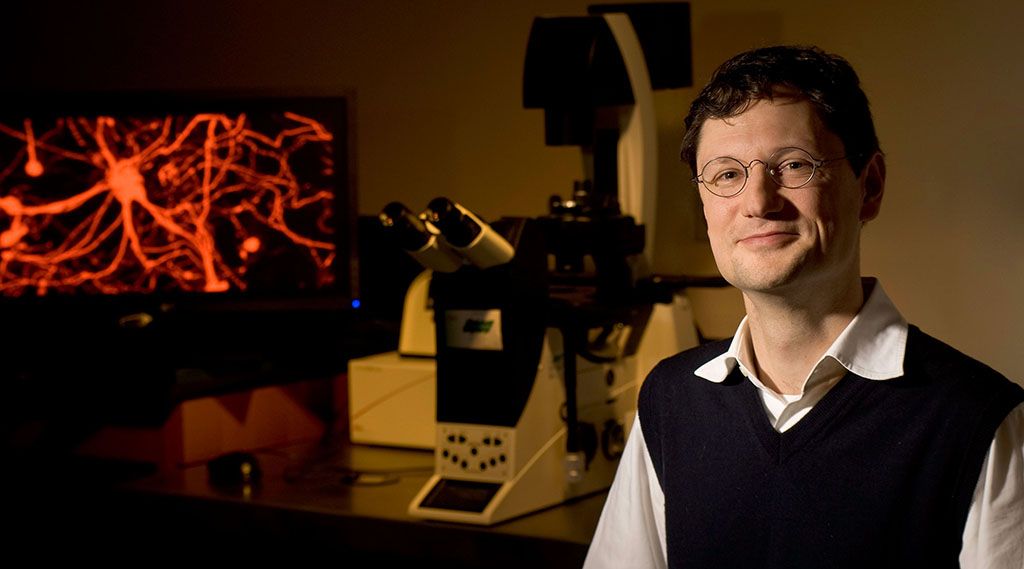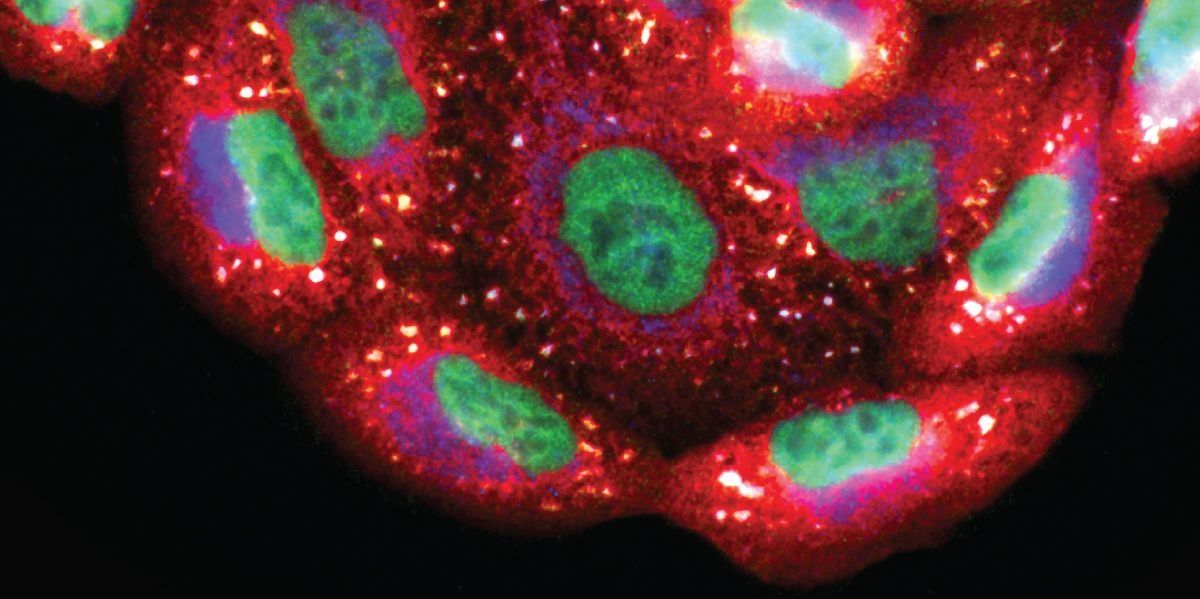Chemically induced pluripotent stem cells (CiPSCs) may provide an alternative and attractive source for stem cell-based therapy. Sufficient telomere lengths are critical for unlimited self-renewal and genomic stability of pluripotent stem cells. Dynamics and mechanisms of telomere reprogramming of CiPSCs remain elusive. We show that CiPSCs acquire telomere lengthening with increasing passages after clonal formation. Both telomerase activity and recombination-based mechanisms are involved in the telomere elongation. Telomere lengths strongly indicate the degree of reprogramming, pluripotency, and differentiation capacity of CiPSCs. Nevertheless, telomere damage and shortening occur at a late stage of lengthy induction, limiting CiPSC formation. We find that histone crotonylation induced by crotonic acid can activate two-cell genes, including Zscan4; maintain telomeres; and promote CiPSC generation. Crotonylation decreases the abundance of heterochromatic H3K9me3 and HP1α at subtelomeres and Zscan4 loci. Taken together, telomere rejuvenation links to reprogramming and pluripotency of CiPSCs. Crotonylation facilitates telomere maintenance and enhances chemically induced reprogramming to pluripotency.
Category: biotech/medical
It was a great pleasure to share latest data and insights with a fantastic community of researchers, engineers, innovators and investors last week, hosted by the Imperial College Centre for Neurotechnology in London. Hope you enjoy the overview slides!
Presentation by Alvaro Fernandez hosted by the Imperial College Centre for Neurotechnology in London.
Description: As seen in patent and investment trends, research findings and consumer/patient behaviors, Mental Health and Brain Enhancement are rapidly evolving in transformational ways which some call “empowering” and some “controversial.” Alvaro Fernandez, Editor-in-Chief of independent market research firm SharpBrains, will present and discuss the latest market data and forecasts on how digital platforms are poised to revolutionize brain & mental health diagnostics, monitoring, therapies and enhancement.
Programme:
A new class of patients could soon be treated for breast cancer, no chemotherapy required. That’s because they don’t really benefit from it, according to a study published Sunday in the New England Journal of Medicine.
Those patients: those diagnosed with early-stage, invasive, hormone-receptor-positive breast cancer who scored in a specific range of a genetic test. They benefit just as much from chemotherapy, which many don’t tolerate well and can have long-term consequences, as they do from hormone treatments, which have many fewer side effects.
But before this study came out, many people in this group were prescribed chemotherapy because doctors had, based on the best information available, assumed it would help them. For those people, the side effects of chemotherapy could have been avoided, without making the treatment any less effective.
Today, we will be taking a look at a new study showing that an NAD+ precursor was able to improve mitochondrial function in cells and flies with a model of Parkinson’s disease.
Summary
While mitochondrial dysfunction is emerging as key in Parkinson’s disease (PD), a central question remains whether mitochondria are actual disease drivers and whether boosting mitochondrial biogenesis and function ameliorates pathology. We address these questions using patient-derived induced pluripotent stem cells and Drosophila models of GBA-related PD (GBA-PD), the most common PD genetic risk. Patient neurons display stress responses, mitochondrial demise, and changes in NAD+ metabolism. NAD+ precursors have been proposed to ameliorate agerelated metabolic decline and disease. We report that increasing NAD+ via the NAD+ precursor nicotinamide riboside (NR) significantly ameliorates mitochondrial function in patient neurons. Human neurons require nicotinamide phosphoribosyltransferase (NAMPT) to maintain the NAD+ pool and utilize NRK1 to synthesize NAD+ from NAD+ precursors. Remarkably, NR prevents the age-related dopaminergic neuronal loss and motor decline in fly models of GBA-PD.
Researchers at the University of California San Diego School of Medicine have shown that they can block inflammation in mice, thereby protecting them from liver disease and hardening of the arteries while increasing their healthy lifespan.
The study, published in the journal Nature, shows that inflammation can be blocked using a naturally occurring antibody that binds with oxidized phospholipids (OxPL), molecules that are located on the cell surface and are modified by inflammation [1]. This is the first time in a living animal that OxPL has been shown to trigger inflammation that leads to the formation of arterial plaques, the foundation of heart disease.
The mice were given a high-fat diet and treated with the antibody, which prevented artery-hardening arterial plaques from forming, prevented liver disease, and increased their lifespan. The study results also highlight a potential new approach to preventing or reversing a variety of inflammatory diseases.
Kidney cancer spreads
Posted in biotech/medical, genetics
By Andy Coghlan
Many people with cancer die not from their original tumour, but from secondary tumours that grow elsewhere around the body. Now we’re a step closer to understanding how cancers are able to spread.
Sakari Vanharanta of the Medical Research Council Cancer Unit at the University of Cambridge and his colleagues have been studying kidney cancer cells. They found that to spread, these cells tap into the same genetic “travel” machinery normally used by healthy white blood cells to roam around the body.
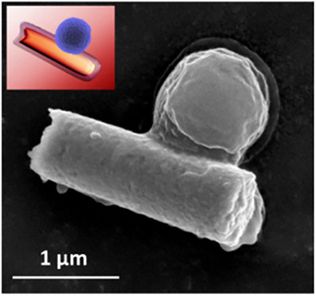
Engineers at the University of California San Diego have developed tiny ultrasound-powered nanorobots that can swim through blood, removing harmful bacteria and the toxins they produce.
These proof-of-concept nanorobots could one day offer a safe and efficient way to detoxify and decontaminate biological threat agents — providing an fast alternative to the multiple, broad-spectrum antibiotics currently used to treat life-threatening pathogens like MRSA bacteria (an antibiotic-resistant staph strain). MRSA is considered a serious worldwide threat to public health.
The secret to longevity may lie in the microbiome and the gut, according to researchers from McGill University, Canada.
It is already known that the bacteria living in our intestinal tract could have an influence on how well we age. Building on this knowledge, McGill University scientists fed fruit flies with a combination of probiotics and a herbal supplement called Triphala. These experiments were able to prolong the insects’ longevity by 65% and protect them against chronic diseases associated with aging.
Aged population is increasing worldwide due to the aging process that is inevitable. Accordingly, longevity and healthy aging have been spotlighted to promote social contribution of aged population. Many studies in the past few decades have reported the process of aging and longevity, emphasizing the importance of maintaining genomic stability in exceptionally long-lived population. Underlying reason of longevity remains unclear due to its complexity involving multiple factors. With advances in sequencing technology and human genome-associated approaches, studies based on population-based genomic studies are increasing. In this review, we summarize recent longevity and healthy aging studies of human population focusing on DNA repair as a major factor in maintaining genome integrity. To keep pace with recent growth in genomic research, aging- and longevity-associated genomic databases are also briefly introduced. To suggest novel approaches to investigate longevity-associated genetic variants related to DNA repair using genomic databases, gene set analysis was conducted, focusing on DNA repair- and longevity-associated genes. Their biological networks were additionally analyzed to grasp major factors containing genetic variants of human longevity and healthy aging in DNA repair mechanisms. In summary, this review emphasizes DNA repair activity in human longevity and suggests approach to conduct DNA repair-associated genomic study on human healthy aging.
Aging is an inevitable process in human life. Many countries are rapidly transitioning to an aging society due to increasing life expectancy and advanced medical supports [1–3]. Over the last few decades, the advent of aging society is considered a crucial issue that may cause future decline in productivity of community [1, 4]. Many researchers have recently warned that urban environmental pollutants can cause physiological weakness and increase the risk of premature aging or chronic diseases in the elderly population [5–9]. Thus, interest in antiaging and healthy longevity is constantly increasing. “Active aging” or “successful aging” has been spotlighted as a strategy to promote social contribution of the elderly [10]. The definition of successful aging remains controversial.
